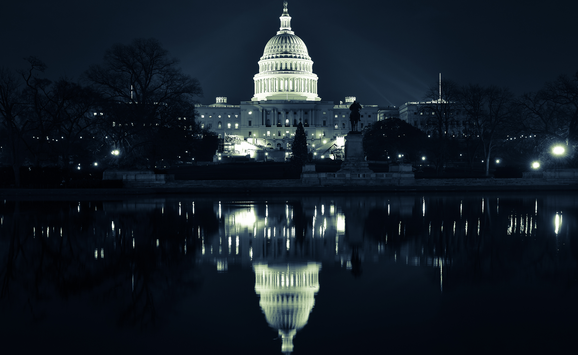The United States is piling up trade debt at a dizzying pace. Last year, for example, the value of U.S. imports exceeded its exports by more than $148 billion, and the end is nowhere in sight.
The key question, which will determine what happens to the world economy over the next two or three years, is whether this enormous external deficit in the United States will prove to be financeable. Or rather, as it will have to be financed, the real question concerns the terms and conditions under which these deficits will be financed.
But is this not unduly gloomy? After all, the dollar has been going down, and was it not a too-strong dollar that encouraged imports and depressed exports? Yes, but the dollar still has not gone down far enough. Indeed, I project that with the dollar at its level of early May 1986 the external debt of the United States will be more than $700 billion by 1990. In other words, the dollar's decline so far is probably only enough to stop the situation from getting worse, with the United States still going into debt to the tune of another $100 billion or so a year indefinitely into the future.
There are two basic reasons for that perhaps surprising result. The first is that the starting position is so bad—something I think Americans do not yet fully appreciate. In 1985 the United States imported roughly 45 percent more than it exported. I have checked that figure against cases of other countries going into debt so fast in relation to their current income and found just two comparisons. That "dreadful" French Socialist government went for growth in the middle of a world recession and, at the worst, spent 12 percent more than it was earning. My second comparison is with a group of the seven major debtor developing countries, which on the eve of the debt crisis in 1982 were spending 28 percent more than they were earning. So the United States already is going into debt far faster than either the major debtor countries or any other major industrialized country ever has done before.
That bad starting position generates what I call two "adverse gap" factors. The first is that if expenditures are very much higher than income, even if they both begin to increase at the same percentage rate, the gap between them goes on increasing. If the United States annually spends $120 billion more than it earns and if both imports and exports increase at 10 percent a year, the gap between them would increase by $12 billion a year. That may sound like a funny piece of arithmetic, but it is precisely what Brazil discovered when things went wrong: once a country has a very large deficit in relation to current earnings, exports have to go up much faster than imports if the gap is to be closed.
The second gap factor is simply that if you go into debt you have to pay interest on it. Again, the arithmetic is quite simple. The United States is accumulating debt at over $100 billion a year and paying perhaps 7 or 8 percent interest. Each year the current account is getting worse by $8 billion to $10 billion a year.
So those two factors by themselves mean that, even if everything else were all right, the U.S. current account would deteriorate by $20 to $25 billion a year because of the bad starting position.
The second reason why the situation is surprisingly bad is that even with the dollar moving in the right direction it will take time before there will be much response. Typically in the models we use it takes two or three years for the full effects to come through. My own suspicion is that this may prove to be a case where the full effects take even longer because, based on the experience in other countries, when an exchange rate has been very overvalued for some time the initial effects of its going down are not what the model suggests.
Making history
Very large current account deficits are going to continue for some time whatever happens, and they are going to have to be financed somehow. And that brings us back to the terms and conditions on which the United States was and is going to be able to finance current account deficits of $100 billion or more last year, this year, and thereafter. That is a complicated question. One can look at what has happened to other countries and it appears fairly straightforward, but the United States is not like any other country. It is the most powerful, richest, most credit-worthy country in the world, and debt of this magnitude has not happened before. And therefore it is very difficult to find any formal economic analysis that can give one some real indication of the creditworthiness of this country.
With that proviso, let me pick out three features of the situation. One is unique: the United States is going into debt in its own currency. There is virtually no case of a country going into debt at this rate and still being able to denominate its debts in its own currency. Of course, that has advantages: you cannot run out of your own currency as you can always print some more. On the other hand, it means that the debt calculus for the United States is very different from that for Brazil or Mexico. For a Brazil or a Mexico, the lender does not worry about exchange risk because his claim is not denominated in cruzeiros or pesos; he worries about sovereign risks, about default, about liquidity. But for the people who are lending to the United States, the worry is quite different. When the dollar goes down, it is they who are carrying the exchange risk. So it is very likely that the limits to U.S. capacity to borrow will be determined not by the traditional indicators that we look at for other countries but will be determined effectively by the amount of exchange risk that foreigners are willing to take.
The second point is that people will be carrying exchange risks not only on the dollars that they lend to the United States but on all the dollars they already hold. They acquired these "other" dollars not as the result of the United States going into debt and issuing dollar-denominated liabilities, but because of other countries going into debt and issuing dollar-denominated liabilities. I have made what I consider a foolhardy attempt to estimate the stock of uncovered dollars held in the rest of the world at the end of 1984, and it comes to something like $800 billion. So, as the dollar goes down, people are not just losing on the money they have put into the United States, they are losing on that $800 billion. So they are going to lose a lot of money; in the various scenarios in my recent book the exchange rate losses in the rest of the world range from $350 billion to $450 billion.
The third element, which is not all that well understood, is that it would be unrealistic to expect interest-rate differentials to move by enough to prevent a run on the dollar. Obviously, when people really start trying to get out of the dollar, that will tend to push up interest rates in the United States and push them down in the rest of the world. But a look at the arithmetic reveals that the interest-rate differential would have to be absolutely enormous to compensate people for their perceived exchange-rate risk. For example, based on what has happened to the exchange rate between the dollar and the Deutsche mark over the dozen years we have had floating exchange rates, there is a 44 percent chance that in one month the dollar could go down enough to wipe out a 5 percent (annual) interest-rate differential, and a 21 percent chance the dollar could go down in one month by enough to wipe out a 20 percent interest-rate differential.
Forecast: recession
As I say, it is a complicated story, but the upshot is this. Because this disequilibrium has gone so far and gained so much momentum, we are in a situation where at some point foreigners willingness to invest their savings in the United States is going to dry up faster than America's need for those savings to make up for the shortfall of domestic savings. This will not happen overnight; it will take time for the markets to change their views. My hunch is that it will not be until the dollar has gone down most of the way that the band-wagon really develops, and people say: "Gosh, I'm not going to put any more money into that country; in fact, I'm going to try and get my money out." And then the trouble starts.
Now, what happens then? Basically, one of two things. Either U.S. savings have to rise relative to U.S. investments, or U.S. investments have to fall relative to U.S. savings—by approximately 3 percent of GNP. There is no reason to suppose that U.S. private savings will increase, however high interest rates go. Savings behavior is extremely sluggish and indeed the recent trends in the household savings ratio have moved ominously in the opposite direction. The other way of dealing with the savings problem is to cut the budget deficit or, in other words, to reduce dis-saving. But what I think people are missing here is that whatever is done about the budget, it will not be possible to get the fiscal sums exactly right. At some point, which may be only twelve or eighteen months away, foreigners' ex ante desire to put money into this country will be zero or negative. And at that point crowding out in U.S. financial markets will be inevitable unless the budget deficit has been cut to zero by then. Of course, that is not conceivable.
Figure 1. How the world would look if each country’s geographical size were proportional to its share of world trade, 1984

So that leaves us with the inescapable fact that the only way this adjustment can be brought about is through U.S. investment being reduced into line with the available saving. If the economy is strong at the time, interest rates will have to be forced up to the point at which the economy is pushed into recession and investment comes down. Or, which I think is becoming more likely, the U.S. economy already may be in a recession by the time this bandwagon really develops, in which case it may not be that interest rates get forced up, but simply that they do not drop in the way they normally would in a recession.
This gloomy scenario is not inevitable. Indeed, there are some encouraging signs. In particular, the U.S. Treasury last year rejoined the world, and the new team there seems to understand what needs to be done. But nothing will come easily and the most likely forecast is for too few steps taken too late. It is hard to be an optimist.

Stephen N. Marris is a senior fellow at the Institute for International Economics and author, most recently, of its 1985 book, Deficits and the Dollar: The World Economy at Risk. From 1975 to 1983 he was chief economist at the Organization for Economic Cooperation and Development in Paris. This article is adapted from his presentation at a policy briefing organized by RFF's National Center for Food and Agricultural Policy.





